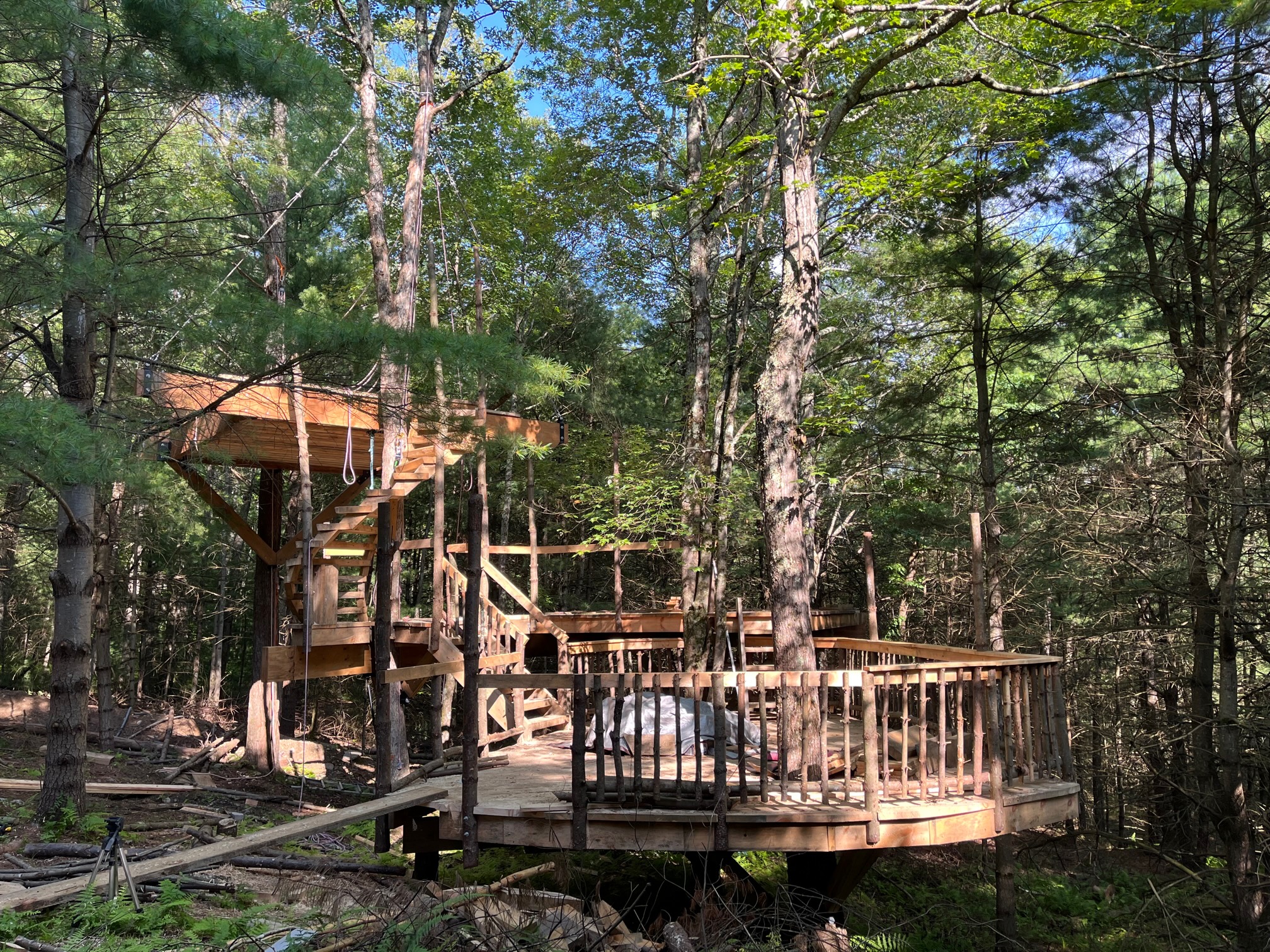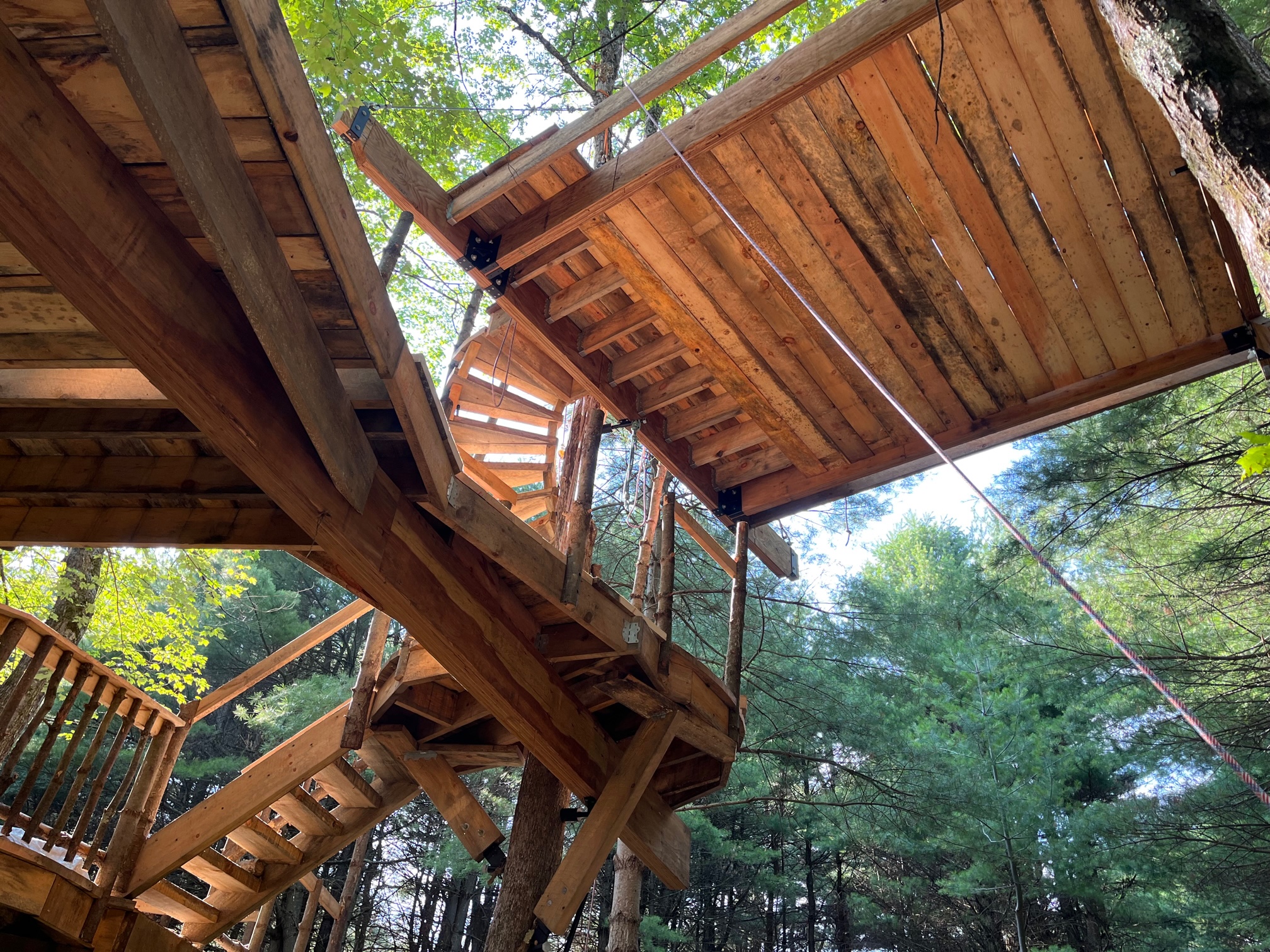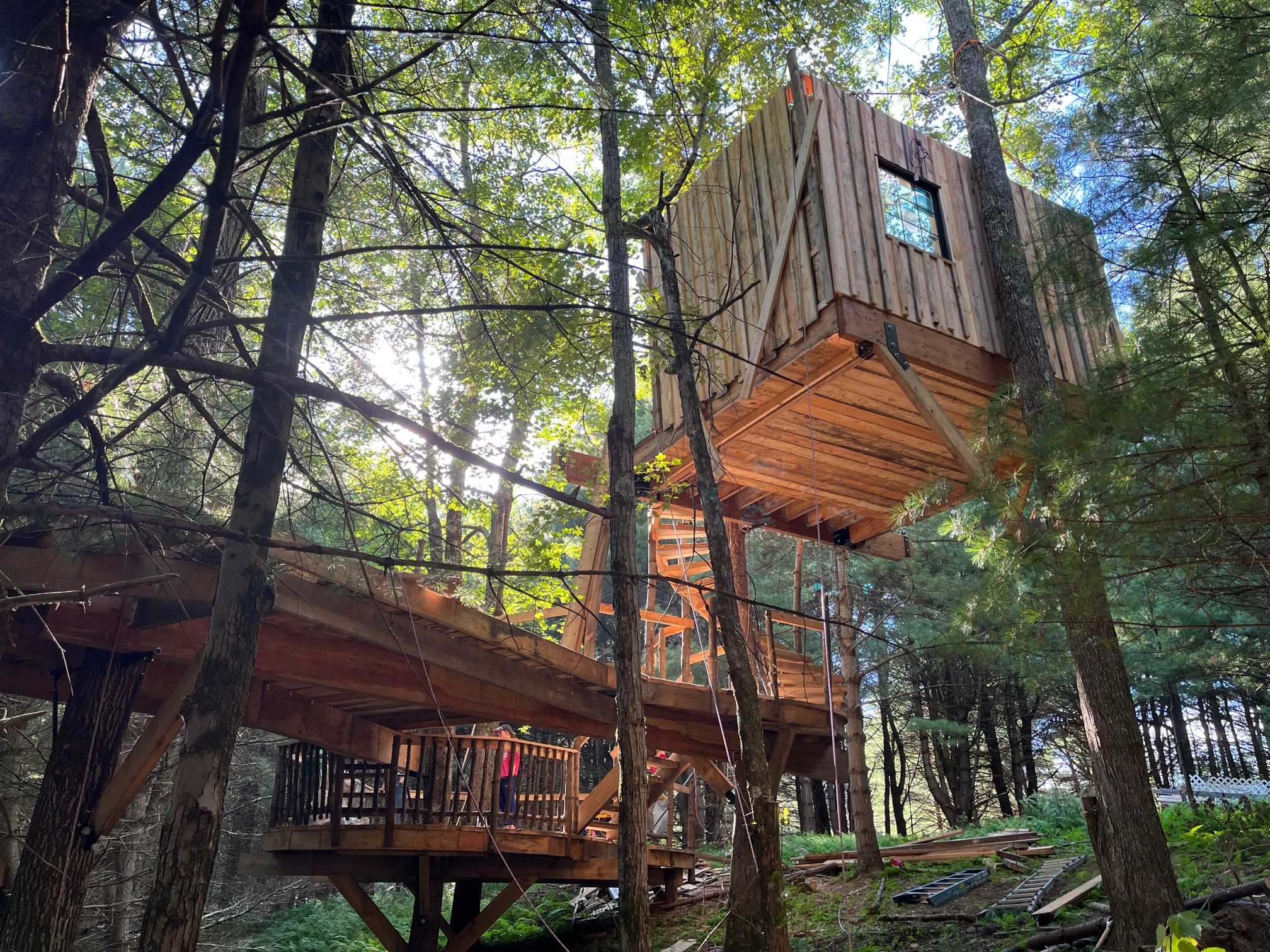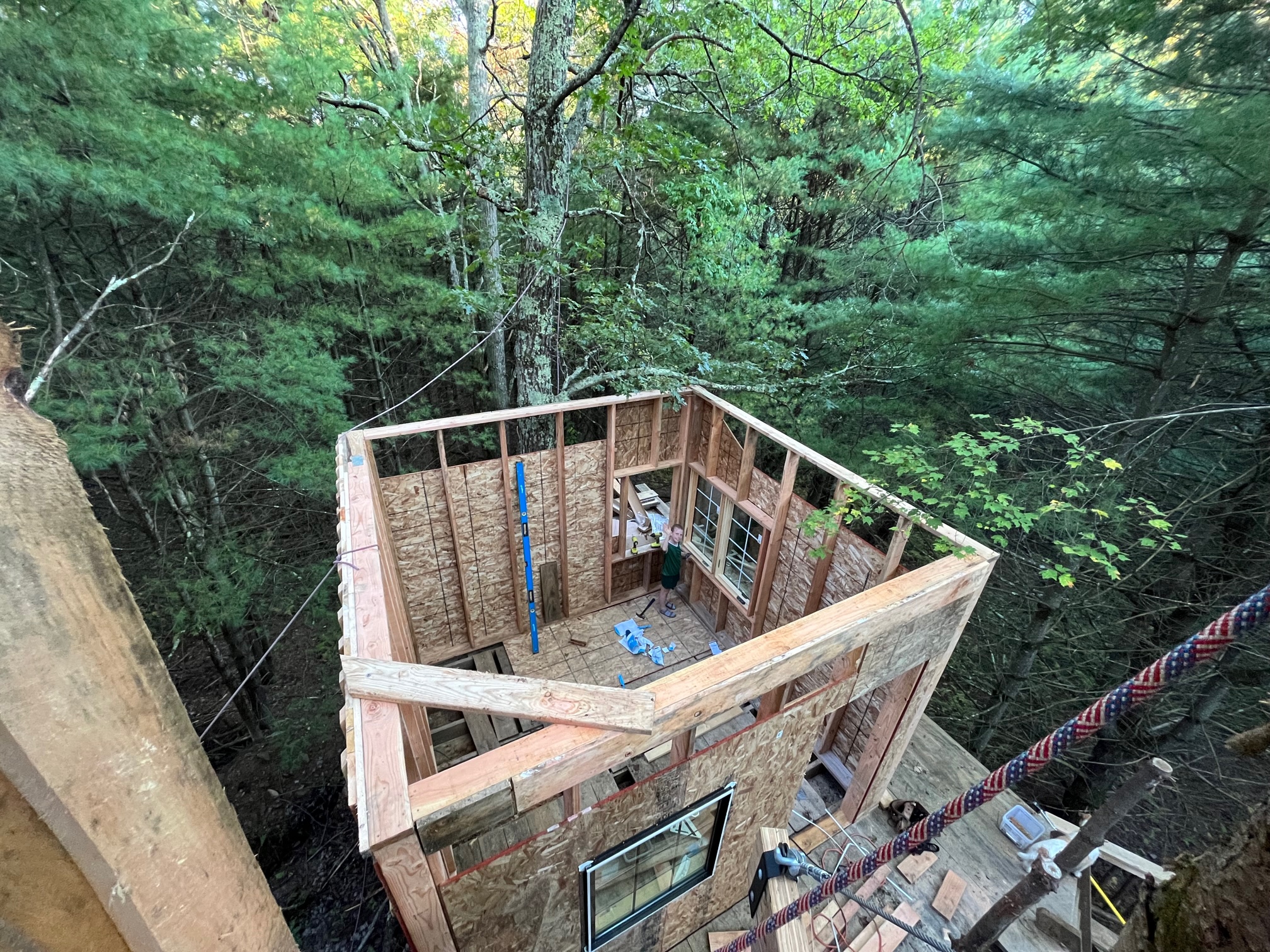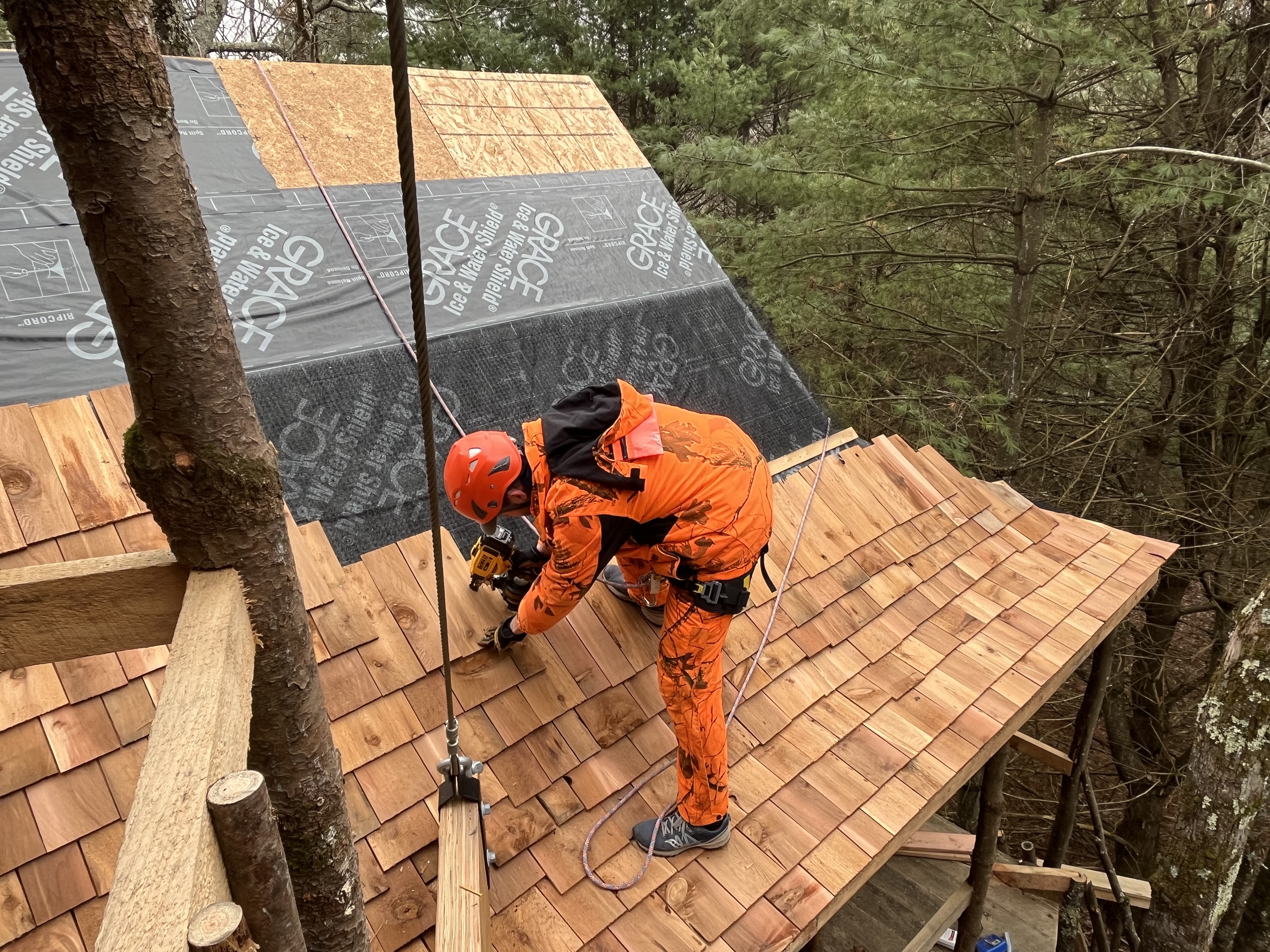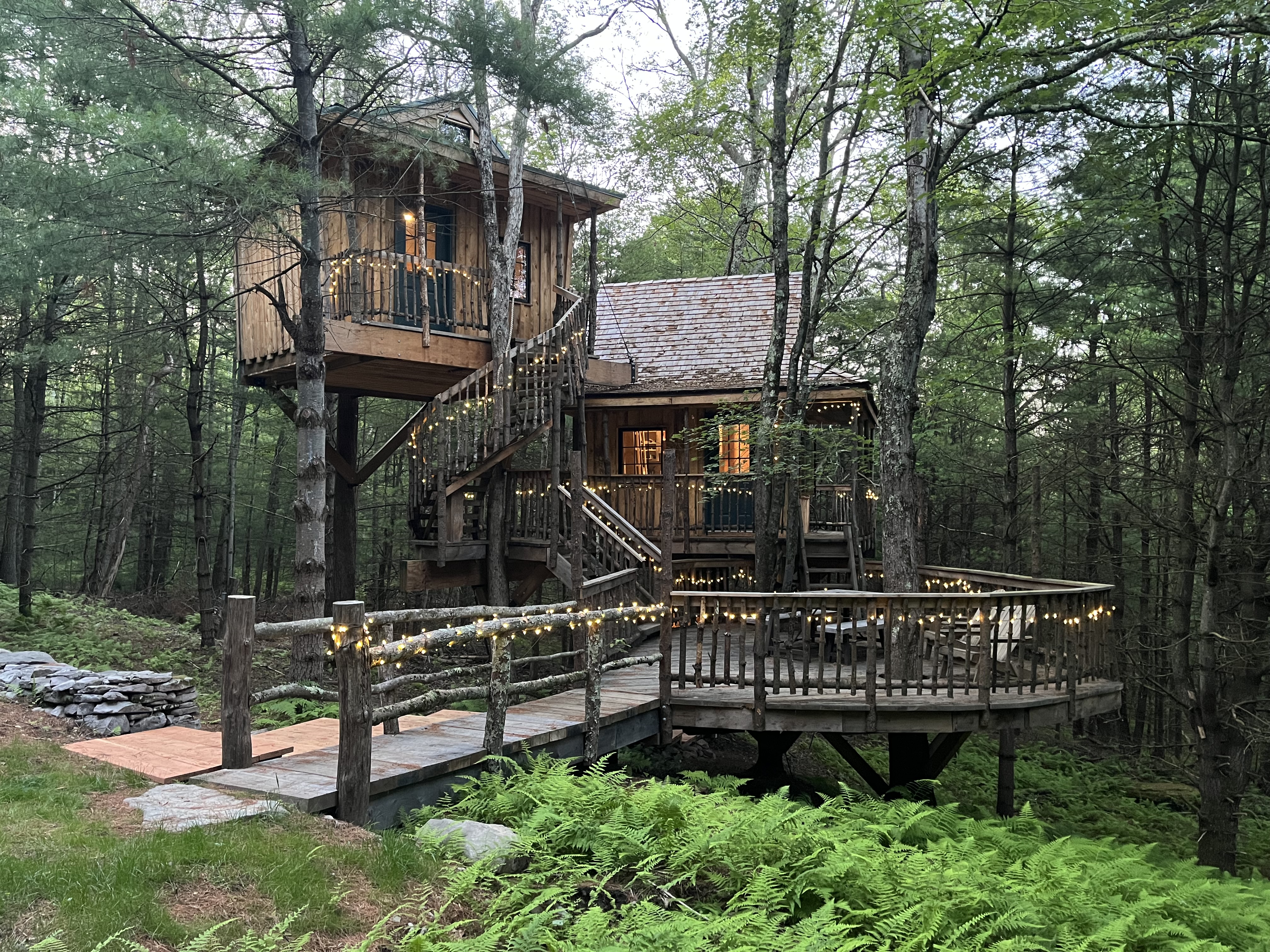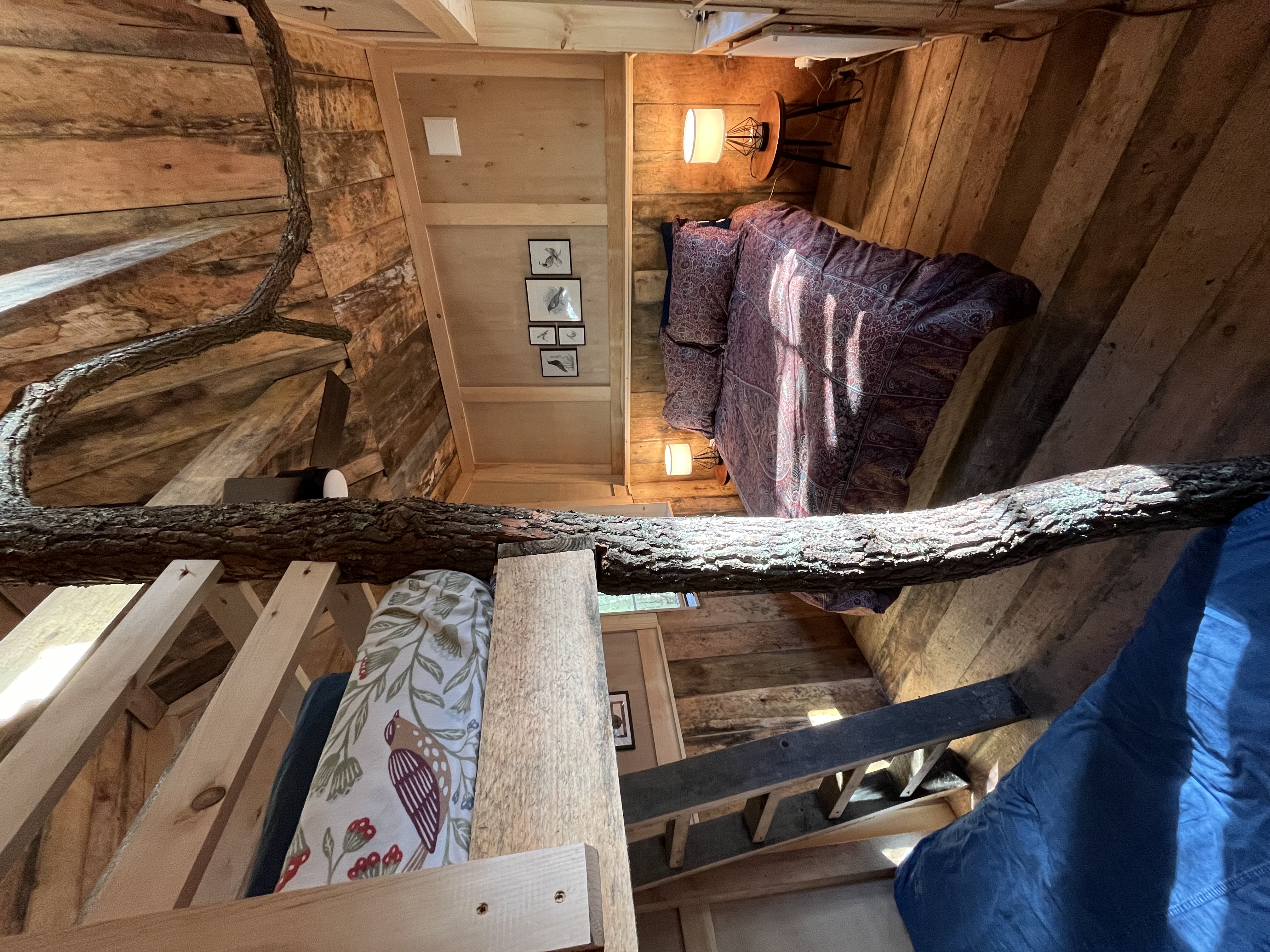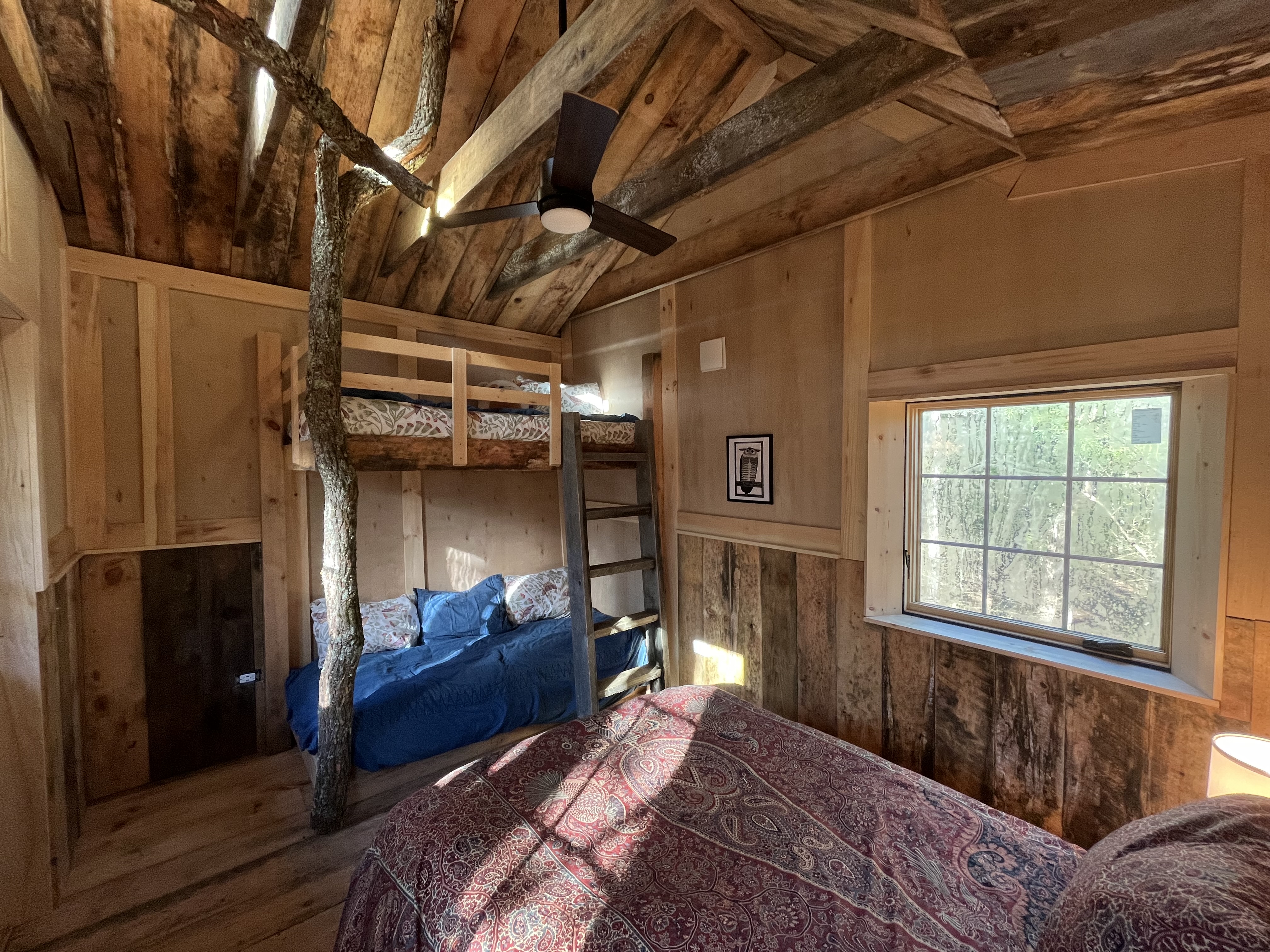What does it take to build a treehouse? Well, that depends on whether it's a typical backyard kids' treehouse or an all-season retreat designed using Passive House techniques and capable of accommodating up to eight people. Add to these considerations the requirement that the treehouse had to be all-electric and the project specifications for what became Little Birds Treehouse quickly outpaced those of your average tree structure.
When our family moved out of New York City in 2016 and built our Passive House farmhouse on a 120-acre property near Port Jervis, NY, I promised my wife I’d build a treehouse for our kids as soon as I finished the main house. Fast forward seven years, and although we've been living in our house for six of those years, the exterior stone façade and some finishing touches remain incomplete. With our kids growing older and one heading off to college soon, the urgency to fulfill my treehouse promise grew. Thus, I was convinced to finally make good on it.
As an architect with a bit of a whimsical streak, my mind quickly conjured up a fantastic, multi-level design reminiscent of the Swiss Family Robinson’s. Using Sketchup, I transformed this vision into a treehouse I could build, although it would require five trees to support it. I even had the perfect place for it, just beyond the wood line next to our back fields. The chosen site was sheltered from view but still accessible—approximately 700 feet from our house and driveway.
However, I soon realized that what I had envisioned was far grander and more expensive than what I could justify for our kids' enjoyment alone, and indeed would be an experience that ought to be shared with short-term paying guests. After all, what better way could there be to introduce vacationers to the many benefits of Passive House, and to the flexibility of this approach, than with a whimsical treehouse.





